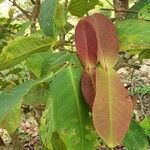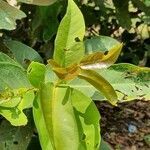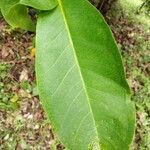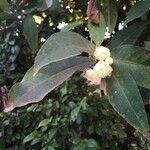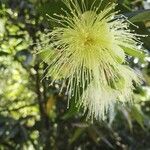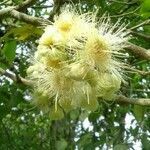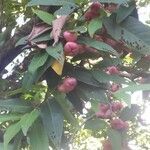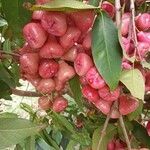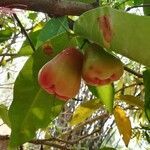Trees. Leaves elliptical-oblong, rounded or subcordate at the base, mostly obtusely acuminate at the apex, 10-24 cm. long and 4-11 cm. wide, chartaccous, glabrous, aromatic. Inflorescence terminal or lateral, in the first case often many-flowered, the flowers usually in clusters of 3. Receptacle cup-like, produced above the ovary, about 12 mm. high. Sepals 4, semi-orbiculate, glabrous, about 4 mm. long. Petals and stamen filaments yellowish white, the petals about 1 cm. long, concealed by the elongate stamens. Berry pear-shaped or subglobose, about 3-5 cm. long, pinkish or white, carnose, insipid.
A tree up to 15 m high that branches near the base giving a spreading open tree. The leaves are smaller (25 cm x 10 cm) and more pointed than Malay apple and on short stalks. Flowers are about 3 cm wide and white. They are on leafy twigs. It produces clusters of attractive glossy pink waxy looking fruit. Fruit are 3 cm long and 3-5 cm wide. At the end of the fruit there is a cavity almost enclosed by four lobes. The fruit has a waxy skin and crispy flesh.
